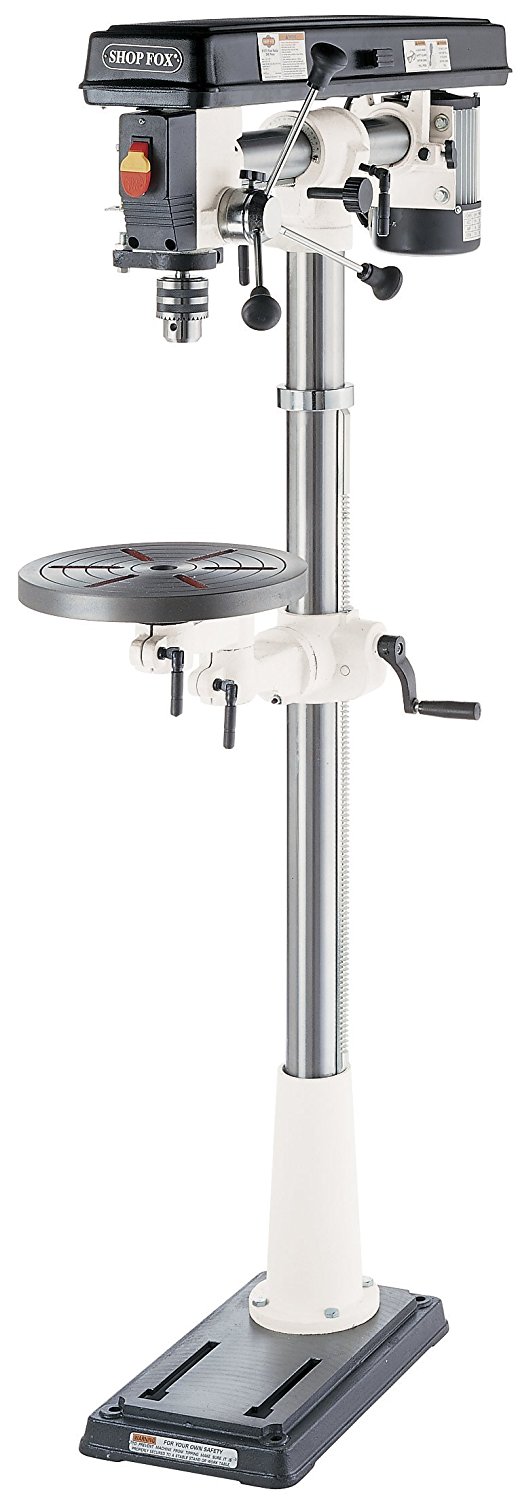Drilling machines are machines that basically drill, ream, bore, counter-bore, countersink, and tap on surfaces. These machines come in various shapes and sizes. There are small ones, used typically for home repairs, then there are the more heavy-duty ones used in major construction sites, then there are the larger ones found in workshops and factories.
Drilling machines basically use an elongated and cylindrical steel bar - ranging from half an inch in length to around six inches for normal use and 72 inches for specialized functions - in various diameters. This bar is pointed on one end and has extended spiral grooves around its body. The spiral groove is sharply edged. This bar is identified as the drill bit. The drill bit is held and connected to a Morse taper component which is rotated by a spindle connected to a motor inside the machine body. The motor can rotate at various speeds controlled by switches on the exterior covering of the machine. Various drill bits of different sizes are used for different functions as the device does not only bore holes but also does other operations such as those mentioned previously. The smaller sized devices are the ones referred mainly as a drill, while the larger ones are referred to as drill presses.
Drill presses have the following typical parts:
· SPINDLE: The spindle is the major component in a drill press that holds the drill or cutting bit. It holds the bit within a sleeve.
· SLEEVE / QUILL: The sleeve is the primary holder of the spindle system of the drill. It can be moved parallel to its axis, and vertically (strictly up and down).
· COLUMN: It is a solid circular shaft that supports both the head of the machine and the worktable. It is mounted on a solid steel base.
· HEAD: This part of the machine is where the spindle, quill, motor, and feed mechanism are all attached.
· WORKTABLE: The worktable is a large and flat surface on which the object to be drilled onto is placed. The worktable can be moved vertically so that work can be done more easily as many drilling work require a 'delicate touch'. There are times however that the worktable is not needed which is why it can also be displaced by swinging it out of the way. The worktable itself can also be rotated on its hinge/connection to the column to accommodate various drilling angles.
· BASE: The base is the part of the machine that holds and supports it upright. It is normally bolted on the floor to eliminate or reduce vibrations when the machine functions, which can affect the work done by the device.
Drilling machines are typically classified into two types: the hand-fed and the power-fed.
Drilling machines basically use an elongated and cylindrical steel bar - ranging from half an inch in length to around six inches for normal use and 72 inches for specialized functions - in various diameters. This bar is pointed on one end and has extended spiral grooves around its body. The spiral groove is sharply edged. This bar is identified as the drill bit. The drill bit is held and connected to a Morse taper component which is rotated by a spindle connected to a motor inside the machine body. The motor can rotate at various speeds controlled by switches on the exterior covering of the machine. Various drill bits of different sizes are used for different functions as the device does not only bore holes but also does other operations such as those mentioned previously. The smaller sized devices are the ones referred mainly as a drill, while the larger ones are referred to as drill presses.
Drill presses have the following typical parts:
· SPINDLE: The spindle is the major component in a drill press that holds the drill or cutting bit. It holds the bit within a sleeve.
· SLEEVE / QUILL: The sleeve is the primary holder of the spindle system of the drill. It can be moved parallel to its axis, and vertically (strictly up and down).
· COLUMN: It is a solid circular shaft that supports both the head of the machine and the worktable. It is mounted on a solid steel base.
· HEAD: This part of the machine is where the spindle, quill, motor, and feed mechanism are all attached.
· WORKTABLE: The worktable is a large and flat surface on which the object to be drilled onto is placed. The worktable can be moved vertically so that work can be done more easily as many drilling work require a 'delicate touch'. There are times however that the worktable is not needed which is why it can also be displaced by swinging it out of the way. The worktable itself can also be rotated on its hinge/connection to the column to accommodate various drilling angles.
· BASE: The base is the part of the machine that holds and supports it upright. It is normally bolted on the floor to eliminate or reduce vibrations when the machine functions, which can affect the work done by the device.
Drilling machines are typically classified into two types: the hand-fed and the power-fed.


No comments:
Post a Comment